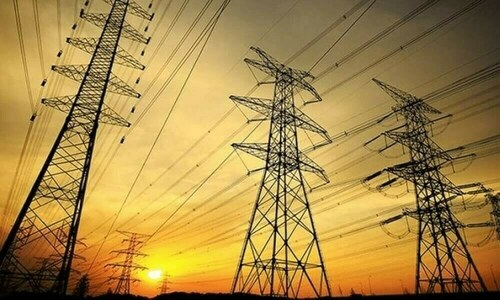Decline in Pakistan’s Electricity Consumption in FY2024-25
During the initial three quarters (July–March) of the fiscal year 2024-25, Pakistan experienced a 3.6% decrease in electricity consumption. This downturn is attributed to several factors, including reduced industrial operations and the financial constraints faced by consumers.
Overview of Electricity Consumption
According to the Economic Survey 2024-25, Pakistan’s total electricity consumption reached 80,111 GWh during July-March FY25, a decrease from 83,109 GWh during the same period in FY24. This decline is linked to continuous energy conservation efforts, increased electricity costs, the adoption of off-grid solar solutions, and a slowdown in industrial activities.
Sector-Specific Consumption Patterns
Household Sector
The household sector remained the primary consumer of electricity, increasing its share to 49.6% (39,728 GWh) during July-March FY25, compared to 47.3% (39,286 GWh) in the corresponding period of FY24. This rise suggests an expansion in residential demand, potentially influenced by population growth, increased appliance usage, and consistent weather-related consumption habits.
Industrial Sector
In contrast, the industrial sector experienced a slight decrease in electricity consumption, both in absolute terms and as a percentage. Consumption fell from 22,031 GWh to 21,082 GWh, reducing its share from 26.5% to 26.3%.
Agriculture Sector
The agriculture sector saw a substantial decline in electricity usage, dropping by 34.3% from 6,951 GWh to 4,566 GWh, which lowered its share from 8.4% to 5.7%. This sharp decrease is likely due to shifts in irrigation methods, rainfall variations, and possibly a transition to diesel-powered or solar alternatives because of increasing electricity expenses.
Commercial Sector
The commercial sector registered a modest rise in consumption, from 6,776 GWh to 6,898 GWh, slightly increasing its share to 8.6%. This increase indicates a marginal improvement in business and retail activities, especially in urban areas.
Other Sectors
The category labeled “others,” which includes public lighting, bulk supply, and government buildings, consumed 7,037 GWh, maintaining a stable share at 9.8%, consistent with the previous year.
PPIB Initiatives for Energy Transition
The PPIB is actively working on various fronts to diversify the energy mix, giving priority to local and renewable resources by substituting imported fuel-based IPPs with indigenous and renewable options.
PPIB is making steady progress toward a successful energy transition and boosting domestic production. This is highlighted by PPIB’s existing portfolio, comprising 19 new IPPs utilizing multiple fuels/technologies (solar, wind, coal, hydro, RLNG/Gas, bagasse) with a total combined capacity of 6,536 MW.
Of these, 16 are renewable energy ventures (including hydropower), indicating that 84% of the portfolio will derive from clean energy sources. This illustrates the Government of Pakistan’s strong commitment to promoting domestic production and implementing renewable energy-based power projects in the country.
Furthermore, the Government of Pakistan has decided to manage future projects based on demand-supply forecasts. An example is the Lahore transmission line project, which was completed with private sector investment through PPIB. Currently, PPIB oversees 88 operational IPPs with a total capacity of 20,726 MW and a combined investment of $28.6 billion. This capacity, along with KE’s, accounts for 59% of the national grid’s capacity.
Under this initiative, solar PV-based power generation capacity will be acquired to replace costly imported fossil fuels used for power generation. The exact amount will be determined upon NEPRA’s approval of the IGCEP. Initially, a 600 MW peak solar project is planned for development at Kot Addu/Muzaffargarh via G2G mode, and it has been offered to the Government of the Kingdom of Saudi Arabia. To ensure a secure and quality supply of solar and wind energy projects, products, systems, installation, and servicing, PPIB certified 149 new solar PV installers between July and February FY25, reaching a total of 689. These certified installers have completed approximately 143,222 solar PV system installations, with a cumulative capacity exceeding 2,113 MW during this period.
Nuclear Power Plants
Pakistan operates six nuclear power plants (NPPs) at two locations with a total installed capacity of 3,530 MW. The Chashma Nuclear Power Generating Station (CNPGS) near Mianwali includes four units (C1, C2, C3, and C4) with a total capacity of 1330 MW. The Karachi Nuclear Power Station (KNPGS) has a total capacity of 2,200 MW and features two units (K2 and K3) utilizing generation-III technology. KANUPP, the country’s first nuclear power plant with a capacity of 137 MW, was permanently decommissioned in August 2021 after 50 years of operation.
Pakistan’s NPPs are operating efficiently, despite the decrease in annual electricity demand. The low fuel cost, reliable supply, and technical expertise allow these NPPs to be at the forefront of the merit order prepared by NTDC for dispatch. Their combined capacity factor is 80% over the first nine months of the current fiscal year, despite challenges on the demand side.
Installed Capacity and Generation
As of March 2025, the total installed electricity generation capacity reached 46,605 MW. Hydropower, nuclear, and renewable sources collectively accounted for 44.4% of the installed capacity, an increase from previous years, while thermal power decreased to 55.7%.
Pakistan generated a total of 90,145 GWh during this period, with 53.7% derived from hydropower, nuclear, and renewable sources, indicating a positive move toward sustainable energy solutions. The household sector remains the largest consumer, accounting for approximately half of the country’s electricity usage.



Comments (0)
No comments yet. Be the first to comment!
Leave a Comment